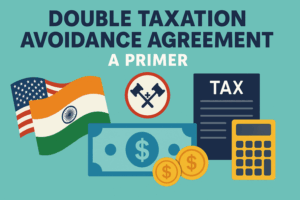
India’s economy is growing fast—but who’s keeping track of how the government spends our hard-earned tax money? Meet the Comptroller and Auditor General of India (CAG)—the constitutional watchdog that ensures public money is used wisely, honestly, and efficiently. While it rarely makes headlines, the CAG has quietly shaped India’s political and financial accountability for decades.
Let’s dive into why the CAG matters, what it does, and how its audits have made history.
What Is the CAG of India?
The CAG is India’s supreme audit authority, established under Article 148 of the Constitution. It audits the finances of:
- The Central and State governments
- Government-owned companies and PSUs
- Autonomous bodies that receive government funding
It’s not just another bureaucratic office—it’s a cornerstone of our democracy. As Dr. B.R. Ambedkar famously said, the CAG is the most important office under the Constitution. That’s why its rank is on par with a sitting Supreme Court judge.
Origins: A Legacy of Oversight
India’s audit tradition began under British rule, but the modern CAG was shaped during the drafting of the Constitution. The Government of India Act, 1935 planted the seeds, and V. Narahari Rao became the first CAG post-Independence in 1948.
The Indian Audit and Accounts Service (IA&AS), the backbone of the CAG’s operations, dates back to 1860—proof of India’s long commitment to financial integrity.
How Is the CAG Appointed?
- Appointed by: The President of India
- Recommended by: The Prime Minister
- Tenure: 6 years or until the age of 65 (whichever is earlier)
- Post-retirement rule: Cannot hold any office under the Central or State government
Why such strict rules? To ensure the CAG remains independent and impartial. Even their salary and service conditions can’t be changed to their disadvantage after appointment.
The CAG can only be removed like a Supreme Court judge—through a tough parliamentary process involving proven misbehavior or incapacity.
What Does the CAG Do?
1. Audits Public Spending
The CAG audits:
- Expenditure from the Consolidated Fund of India
- Funds of state governments
- PSUs and bodies with government funding
- Receipts, taxes, and debts
It even audits manufacturing operations, remittances, and stock accounts if directed.
2. Reports to Parliament and State Legislatures
Once audits are complete:
- Reports go to the President or State Governor
- Then, they’re laid before Parliament or State Assemblies
- Public Accounts Committees (PACs) scrutinize them
This creates a direct line of accountability from ministries to Parliament to the people.
3. Advises and Assesses
The CAG doesn’t just crunch numbers—it also checks:
- Whether money was used legally and efficiently
- If spending was wasteful or extravagant
- Whether outcomes justify the costs
This is where propriety audits come in—they assess not just legality but wisdom in spending.
Famous CAG Reports That Shook India
2G Spectrum Scam (2010)
Estimated loss: ₹1.76 lakh crore
Impact: Massive public outrage, legal action, and arguably contributed to the 2014 regime change.
Coal Allocation Scam (2012)
Estimated windfall gain: ₹1.85 lakh crore
Criticized the government for non-transparent allocations without competitive bidding.
Fodder Scam (1995)
Exposed ₹940 crore embezzlement in Bihar’s animal husbandry department. Resulted in multiple CBI charges and convictions.
These reports didn’t just expose wrongdoing—they redefined public awareness and accountability in India.
Recent Activity: The CAG in 2024–25
- In FY 2022–23, 172 audit reports were submitted—more than double the number from 2018–19.
- Recent highlights:
- Audit of protected monuments in Karnataka (Dec 2024)
- State finance report for 2023–24 (March 2025)
- The CAG is also working with bodies like the International Atomic Energy Agency (IAEA) and the FAO as an external auditor.
How Does India’s CAG Compare Globally?
- UK’s NAO (National Audit Office) has pre-audit powers—it controls fund releases.
- In India, the CAG mostly does post-audit—reviewing after the money is spent.
- Unlike the UK head who is an MP, India’s CAG is independent of Parliament.
Still, India’s CAG is internationally respected and actively engages in global audit forums.
Challenges Faced by the CAG
- Delayed audit reports: Fewer reports tabled in Parliament in recent years.
- Post-facto limitations: Can’t stop financial mismanagement before it happens.
- Shortage of skilled staff: Particularly in emerging sectors like tech and energy.
- Limited access to data: Especially in sensitive areas like defense or secret service funds.
Suggested Reforms
- Update the CAG Act of 1971 to include:
- Climate change audits
- Public-private partnerships
- AI, tech, and digital infrastructure
- Appointment via a collegium to avoid political bias
- Give statutory powers to the IA&AD
- Enhance training and resources
- Mandate faster document submission for timely audits
Why the CAG Still Matters
In a democracy, where the government spends trillions, someone needs to follow the money. That’s the CAG. It doesn’t seek headlines, but it quietly ensures:
- Taxes are spent wisely
- Corruption is exposed
- Financial discipline is enforced
As India modernizes, so must its institutions. Strengthening the CAG means strengthening democracy itself.
FAQ: Quick Answers About the CAG of India
What is the full form of CAG?
Comptroller and Auditor General of India.
Is the CAG part of the executive branch?
No, it is a constitutional authority, independent of the executive.
Who appoints the CAG?
The President of India, on the recommendation of the Prime Minister.
Can the CAG audit private companies?
Only if they receive substantial government funding or if directed by the President/Governor.
What’s the role of the Public Accounts Committee (PAC)?
To examine CAG reports and question government departments on financial irregularities.
People Also Ask
What is the role of the CAG in India?
As India’s top audit authority, the CAG audits public expenditures and ensures government accountability.
How is the CAG different from the finance ministry?
The finance ministry plans and allocates funds; the CAG audits how they were used.
Can the CAG stop corruption?
While it doesn’t have enforcement powers, its audit findings often lead to investigations, reforms, and prosecutions.







